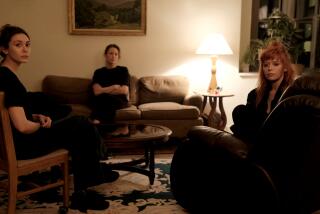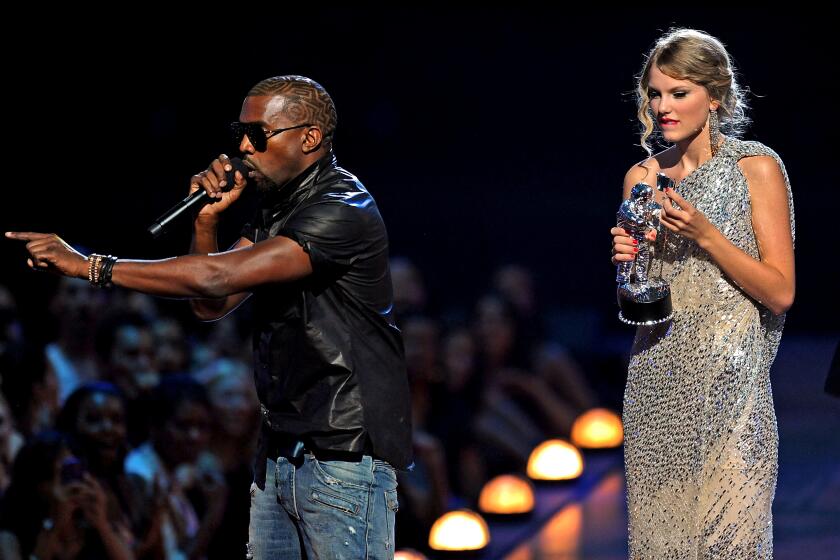Emma Cline’s ‘The Girls’ is a gorgeous, disquieting spin on Manson family dynamics
“I was a daisy-fresh girl and look what you’ve done to me.”
― Vladimir Nabokov, Lolita
“The Girls” is gorgeous, disquieting, and really, really good.
Set mostly in the Bay Area at the tail end of the 1960s, the novel follows Evie Boyd through the “endless, formless summer” before she goes off to boarding school. Evie is 14 and contemptuous (a redundant phrase, to be sure), sick of her suburban town’s ranch houses and “sun-scorched crosswalks,” her predictable best friend, Connie, and her mother, Jean, wandering through her own summer of discontent. Evie’s parents have recently divorced. Her father is remote, off with his new girlfriend, while Jean cycles through all the self-improvement schemes the era so amply provided: incense, astrology, sensory deprivation tanks. “She searched until there was only searching left,” Cline writes.
Bored, aimless and a little bit anxious, Evie isn’t searching so much as waiting, more than ready for some new thing to come along and shake up her life. When she spots a group of girls in the park, looking like “royalty in exile,” glamorous in their carelessness, she’s instantly drawn to them, especially Suzanne, the black-haired girl at the center. Soon, Evie will follow Suzanne and the other girls to the ranch, a rickety commune gathered around its sexually charismatic leader, Russell.
Modeled on Charles Manson, Russell’s a wannabe rock star, a two-bit philosopher, and a serious horndog. Just like the real-life Manson family, Russell has managed to attract an assortment of young women to make his food, share his bed and worship him. Suzanne and the other girls take turns sleeping with Russell, and they flirt with the other men who drift and in and out of the ranch, but it’s their relationships with each other that fascinate Evie; she admires how the group members “[love] one another indiscriminately, with the purity and optimism of children.” Only later, as Russell’s paranoia becomes more evident and the ranch’s dangers more obvious, does Evie begin to see that the girls have let themselves become less childlike than childish, malleable and easily led — in this case, to violence.
The book begins in the present, with an aging Evie thinking back to the murders Russell’s family carried out that August. As in “Helter Skelter,” the book Manson prosecutor Vincent Bugliosi wrote about the actual crimes, Cline paints the picture of a warm summer night, a dark neighborhood, a gate “still strung with Christmas lights.” Bugliosi’s opening chapter goes on to describe the crime scene in gruesome detail — including cries from the neighbor who was the first to see behind the door: “Murder, death, bodies, blood!”
Cline writes with greater literary skill and restraint than Bugliosi; her prose conveys a kind of atmospheric dread, punctuated by slyly distilled observation, not unlike the early cinematic style of Roman Polanski, whose wife, actress Sharon Tate, was killed by the Manson family. That deliberate tone remains throughout, though it’s somewhat less successful in the sections set in the present.
Like her younger self, middle-aged Evie is by turns wry and clinical, wary and direct. Staying alone at a friend’s beach house, her solitary sojourn is interrupted by the homeowner’s college-aged son, his girlfriend and a drug dealer. By turns vapid and menacing, these young people seem like they could have ended up at Russell’s ranch just as easily as Evie had decades earlier, yet it’s not clear what they add to the book, really, except to demonstrate that Evie is damaged, and afraid, but it would be shocking if she weren’t.
[Evie and Connie] licked batteries to feel a metallic jolt on the tongue, rumored to be one-eighteenth of an orgasm.
— Emma Cline
By far the strongest writing comes when Cline limns the nearly exquisite boredom and anticipation of early adolescence. Evie lies by the pool and drinks her parents’ liquor. She and Connie pore over the beauty magazines, following directions and absorbing rituals; they follow teen folk wisdom, “licked batteries to feel a metallic jolt on the tongue, rumored to be one-eighteenth of an orgasm.” They pay more attention to boys’ sexual urges than their own, though; already adjusting themselves to react more than act. “That was part of being a girl,” Cline writes, “The only thing you could do was smile from the corner they’d backed you into.”
Everyone who has been a 14-year-old girl knows the way one’s own sexual desire remains unspoken but a boy’s (or man’s) is unavoidably loud, a set of messages we’re meant to hear and usually forced to respond to in one way or another. As readers and viewers, we’re all familiar with the male perspective on teenage girls as sexual beings — whether it’s jail-bait pornography or Nabokov’s “Lolita,” girls are presented as objects, not subjects of their own stories. Yet there’s an uncomfortable and usually unwritten corollary that former 14-year-old girls will also recognize.
When Humbert Humbert, a narrator both unreliable and unsavory, describes Lolita as a “little deadly demon among the wholesome children; she stands unrecognized by them and unconscious herself of her fantastic power,” he’s lying, but there’s something true there too. It’s a deeply uncomfortable thing to remember, and harder to write about than it looks. What Cline does in “The Girls” is to examine, even dissect, these shifts between power and powerlessness that characterize a girl’s coming of age. When Evie notices older men desiring her, she’s equal parts frightened, revolted and pleased — it’s like learning to use a tool that’s uncomfortable, not always effective, but all you’ve got at hand.
What Cline does in “The Girls” is to examine, even dissect, these shifts between power and powerlessness that characterize a girl’s coming of age.
Like spies behind enemy lines, Evie and Connie study the boys. “We were like conspiracy theorists, seeing portent and intention in every detail, wishing desperately enough that we mattered enough to be the object of planning and speculation. But they were just boys. Silly and young and straightforward; they weren’t hiding anything.” Suzanne and the other ranch girls watch Russell the same way. As a character, Russell himself is not particularly vivid — there have always been guys like him, at least in a minor key. What Cline is more interested in is the hold he has on these girls, who seize on him as a way to escape their own unsatisfying lives. As their summer moves implacably toward August, and murder, it’s impossible not to wonder what would happen if the girls could grab their own power.
Notions of sexual awakening, guilt and innocence are nothing new in literature — especially not when starring a young woman named Eve! — but what Cline has done here feels urgent and fresh. It would have been so easy to get this wrong. Fiction based on historical events — especially one as frequently retold as the Manson family murders — can easily slip into second-hand banality, a kind of nostalgia of horror. But here Cline, born years after the events she explores, brings a fresh and discerning eye to both the specific, horrific crime at her book’s center, one firmly located in a time and place, and the timeless, slow-motion tragedy of a typical American girlhood.
Tuttle is a book critic and freelance writer whose work appears regularly in the Boston Globe.
::
“The Girls”
Emma Cline
Random House: 368 pp., $27
::
It was a big risk -- two big risks, in fact. A year apart at book fairs in two different countries, two 25-year-old women landed 7-figure book deals for their first novels. Seven figures means we’re talking millions, and plenty of eyebrows were raised about the substantial amounts, the untested writers, the potential for it all to go down the drain. Waves of barely-suppressed envy swelled through the literary world. But as those two books hit shelves this summer, it’s clear that sometimes publishing gets it right. This week, Steph Cha reviews “Homegoing,” Yaa Gyasi’s intergenerational novel of two branches of an African family split by slavery, and Kate Tuttle reviews Emma Cline’s Manson family novel “The Girls,” which has already been optioned for film; they explain why these are some of your best summer reading bets.
More to Read
Sign up for our Book Club newsletter
Get the latest news, events and more from the Los Angeles Times Book Club, and help us get L.A. reading and talking.
You may occasionally receive promotional content from the Los Angeles Times.









